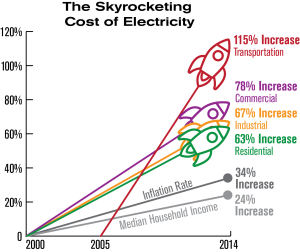Climate-related significant power outages in the United States were up 67% somewhere in the range between 2000 and 2019 and environmental change might additionally worsen the pattern. While a short outage can be somewhat bothering, longer or engineered power outages can have desperate results.
Utilize this power outage manual to find all that you want to be aware of them, including why and where they occur, how long they last, and why squirrels don’t appear to be irritated by any means- Power to Choose .
What Are Power Outages?
A power outage has a few names: power cut, power outage, power outage, power disappointment, and power misfortune are probably the most widely recognized varieties. Anything you call, a power outage is the deficiency of electrical power through an organization to customers.
In straightforward terms, a power outage is a point at which the power in your structure stops working since there is no power. A short outage is in many cases a little burden while additional delayed outages can make peril the climate and public wellbeing, in addition, to bringing billions of dollars of harm.
How Long Do Power Outages Last?

The United States has very nearly 155 million power customers with more than 3,000 electric appropriation frameworks. In 2019, customers encountered a normal of something like 5 hours of power interferences, less than 2018’s six hours and 2017’s record of very nearly eight hours of the year.
Significant outages can endure significantly longer, for example, the current year’s colder time of year storm in Texas that asserted no less than 111 lives and left millions without power for quite a long time.
Barring significant occasions, customers encountered a normal of 90 minutes (92 minutes) of disturbance in 2019, which is moderately reliable with earlier years. It’s dependably smart to get ready for power outages, particularly when there’s no assurance of a decent power restoration schedule.
What Causes Power Outages?
The main source of power outages in the United States is the climate. High breezes can cut down power lines, as can freezing precipitation, weighty snowfall, ice framing on power lines, and lightning-harming gear.
These storms can cut down trees, which thus harms power lines, and bring floods that can disturb aspects of the electrical framework. Vigorously forested states like Maine and West Virginia have continuous outages since trees frequently fall onto power lines.
There are around 160,000 miles of power lines in the United States. Normal mileage of links, connectors, transformers, and switches can cause power outages, too. Laborers and mortgage holders can likewise coincidentally cut power lines, once in a while digging through covered links, and car crashes can thump the stockpile. Occupants in the Florida Keys were not exactly satisfied when a boat hit a power line in Tavernier, outing the power for an hour and a half.
Utilities at times plan outages so they can complete support. They exhort customers in advance and typically give an expected time when electric power will be restored.
Natural life unleashes destruction some of the time, too. A wild turkey flew into Sonoma County’s power lines in California, devastating its 911 dispatch framework, province town hall, and prison for a day, and unfortunately baking the bird.
Nearly 600 customers in Union City, Tennessee, lost power for an hour when two snakes crawled into a substation, causing a power outage, one of the numerous weird power outages in 2019.






